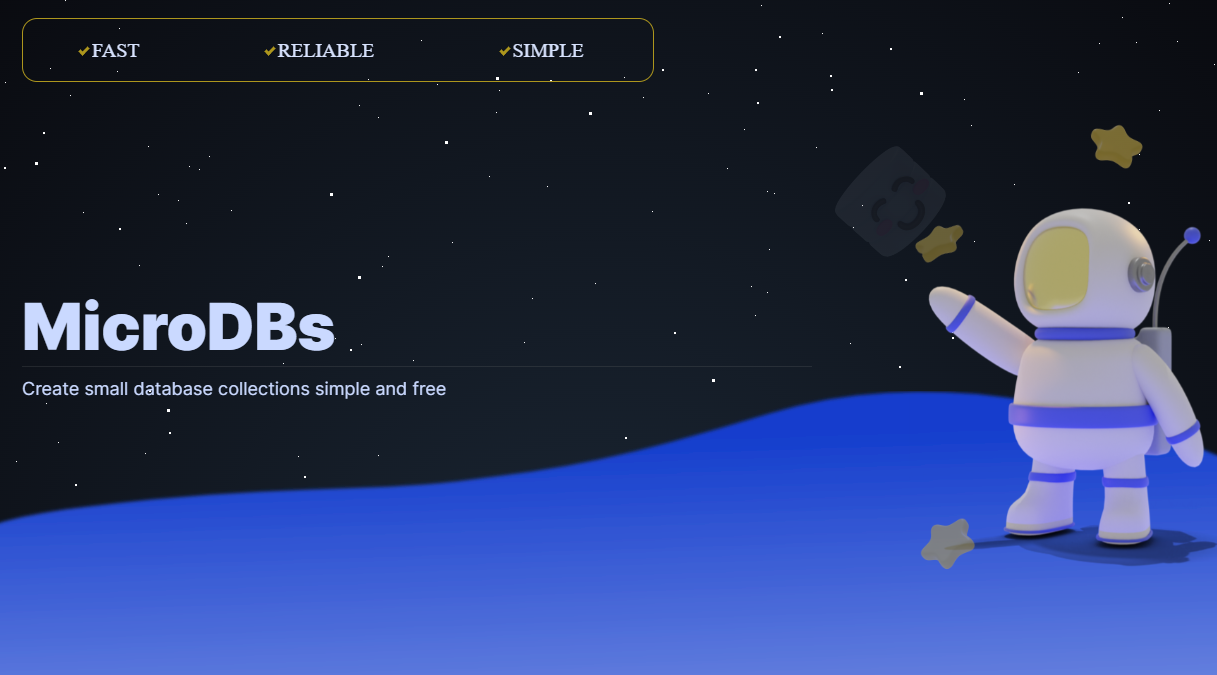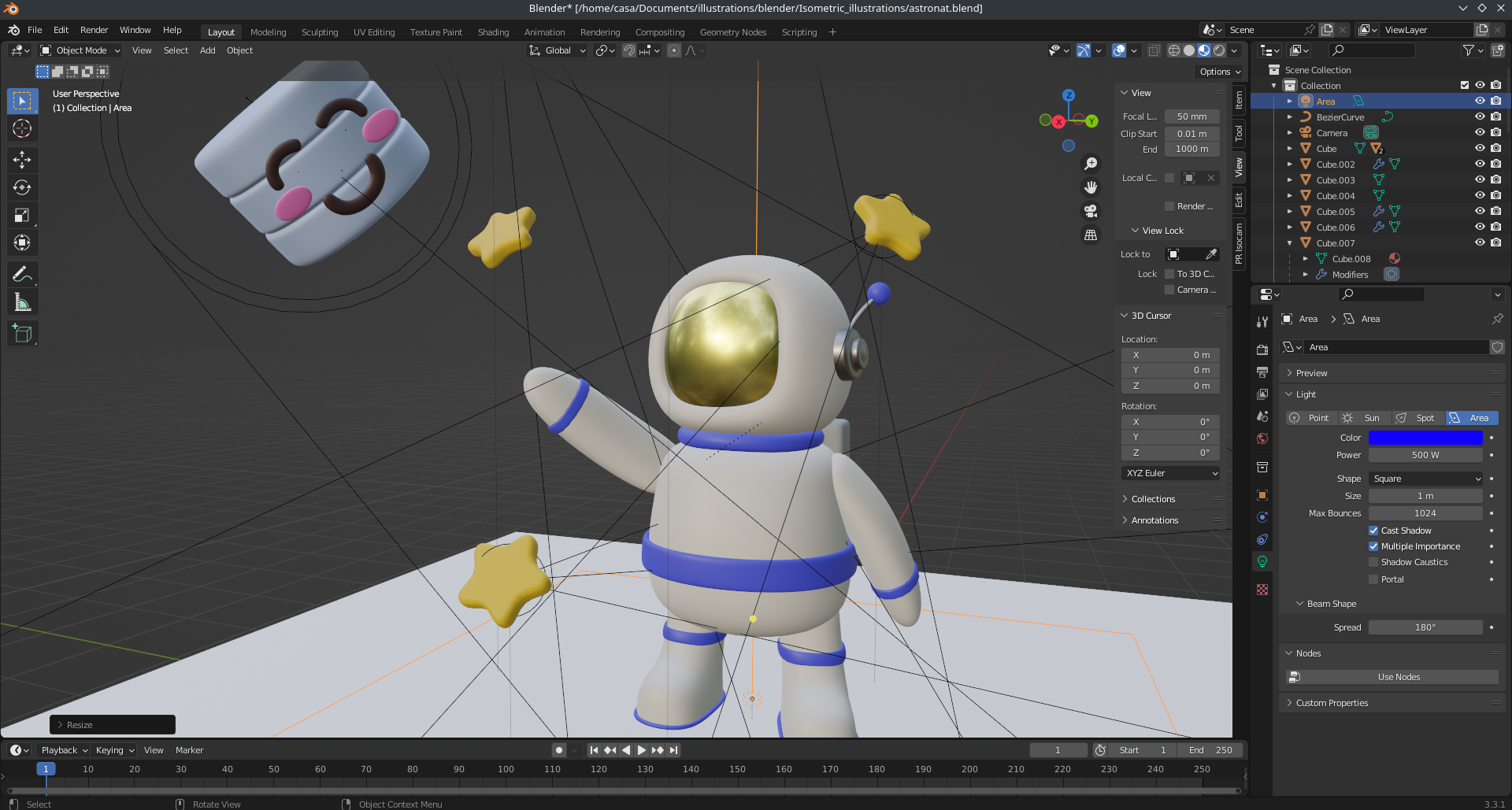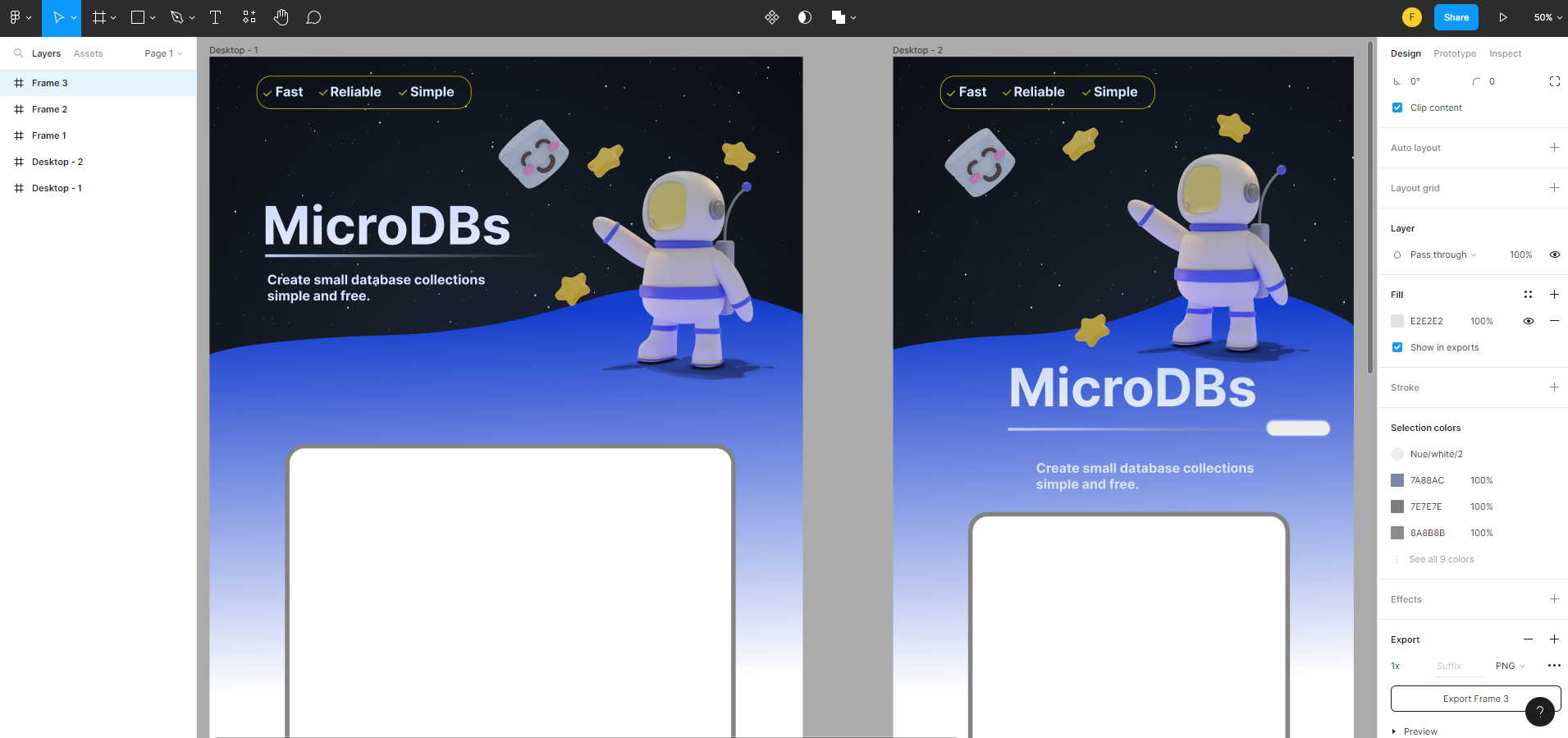
My story of how I built my side project - MicroDBs -
One of the dilemmas I always have when building something is the database, but the biggest one is “what if I want to store something really small? or I might delete it later or use it very little” like a score tracker or a views counter or a little Likes button. Is it worth it? to deploy an entire database just to store a few records.
That’s when I came up with the idea of creating a free service for creating small collections simple and free MicroDBs, where users can create and manage documents, for small purposes without the hassle of dealing with the database itself.
Basic Idea

- Prepare the service to handle thousands collections.
- Allow Users to create a collections.
- Users can delete and modify the existing collection.
- Users can Insert, Find, and update documents.
Building the Frontend
The sketch the layout in Figma
Creating the graphics in Blender

Building the Backend
Solving the project logic in pseudocode
METHOD "POST"
ROUTE PATH "/createcollection"
1. Check if HTTP request is valid
2. Check if collection already exists
3. Store the collection as independent file
4. Store the collection id in an index
METHOD "DELETE"
ROUTE PATH "/delete"
1. Check if HTTP request is valid.
2. Check if collection exists and load it in memory.
3. Validate if user has permission to delete.
4. Delete the collection and delete entry in index.
METHOD "GET"
ROUTE PATH "/find"
1. Check if HTTP request is valid
2. Check if collection exists and load it in memory.
3. Validate if user has permission to read.
4. Respond to request in JSON
METHOD "POST"
ROUTE PATH "/insert"
1. Check if HTTP request is valid
2. Check if collection exists and load it in memory.
3. Validate if user has permission to insert.
4. Validate schema of new document and insert it if ok.
5. Respond status ok
METHOD "PATCH"
ROUTE PATH "/update"
1. Check if HTTP request is valid
2. Check if collection exists and load it in memory.
3. Validate if user has permission to update.
4. find document in collection
5. Validate schema of new document and insert it if ok.
6. Respond status ok
Node packages
"dependencies": {
"ajv": "^8.11.0",
"bcryptjs": "^2.4.3",
"cors": "^2.8.5",
"express": "^4.18.1",
"express-rate-limit": "^6.4.0",
"ip-matching": "^2.1.2",
"ip-range-check": "^0.2.0",
"is-cidr": "^4.0.2",
"joi": "^17.6.0",
"lodash-es": "^4.17.21",
"lowdb": "^3.0.0",
"nanoid": "^4.0.0"
},
"devDependencies": {
"axios": "^0.27.2",
"jest": "^28.1.3",
"nodemon": "^2.0.19"
}
Continuous Integration using GitHub
name: Deploy to GCP server
defaults:
run:
shell: bash -ieo pipefail {0}
on: [workflow_dispatch]
jobs:
build:
runs-on: self-hosted
steps:
- uses: actions/checkout@v3
- name: Install dependencies
run: npm install
- run: pm2 restart all
Testing using JEST
it('Create basic collection', async () => {
const res = await axios.post(`${baseUrl}/createcollection`);
expect(res.status).toBe(200);
expect(res).toHaveProperty('data');
});


